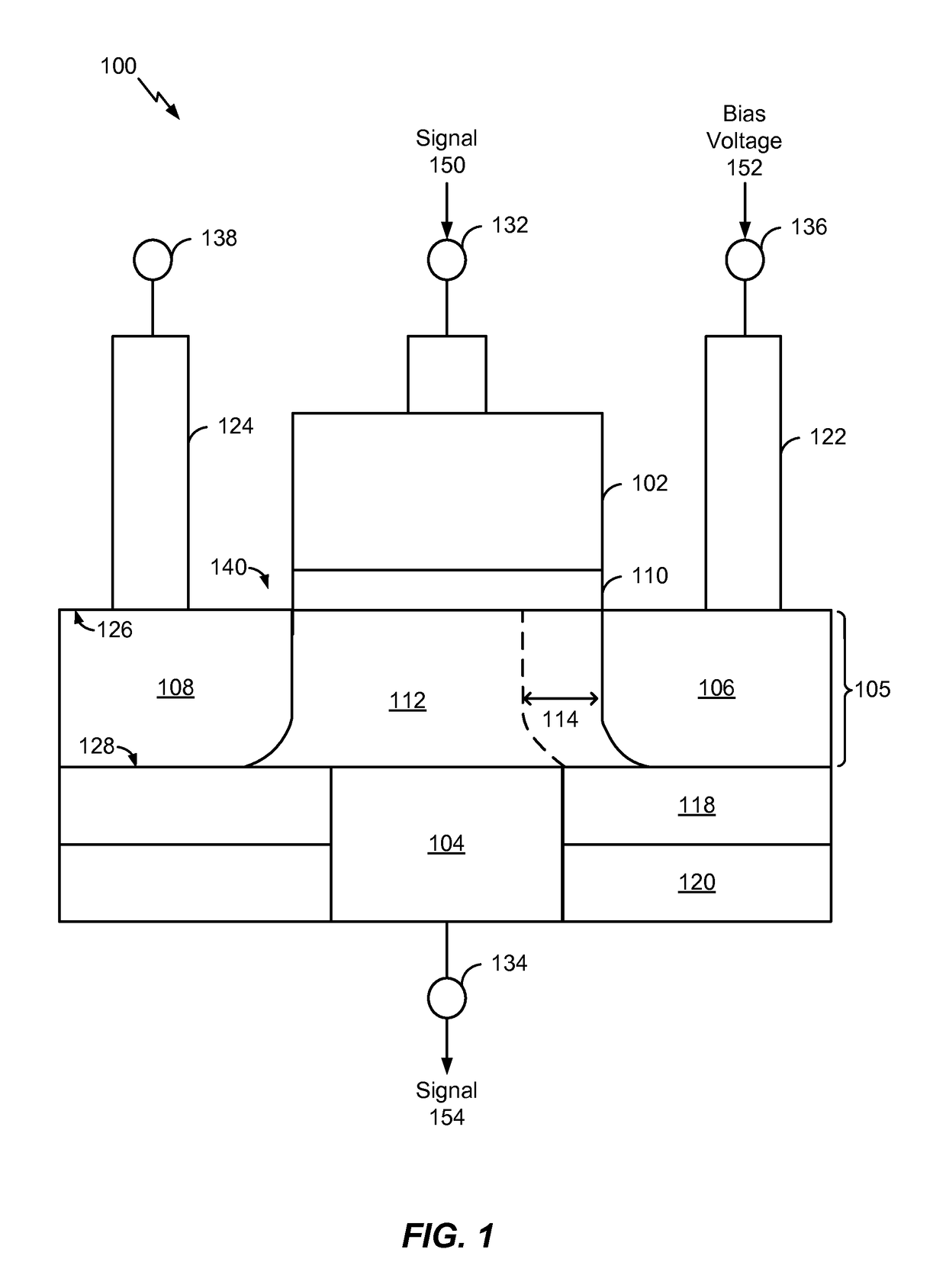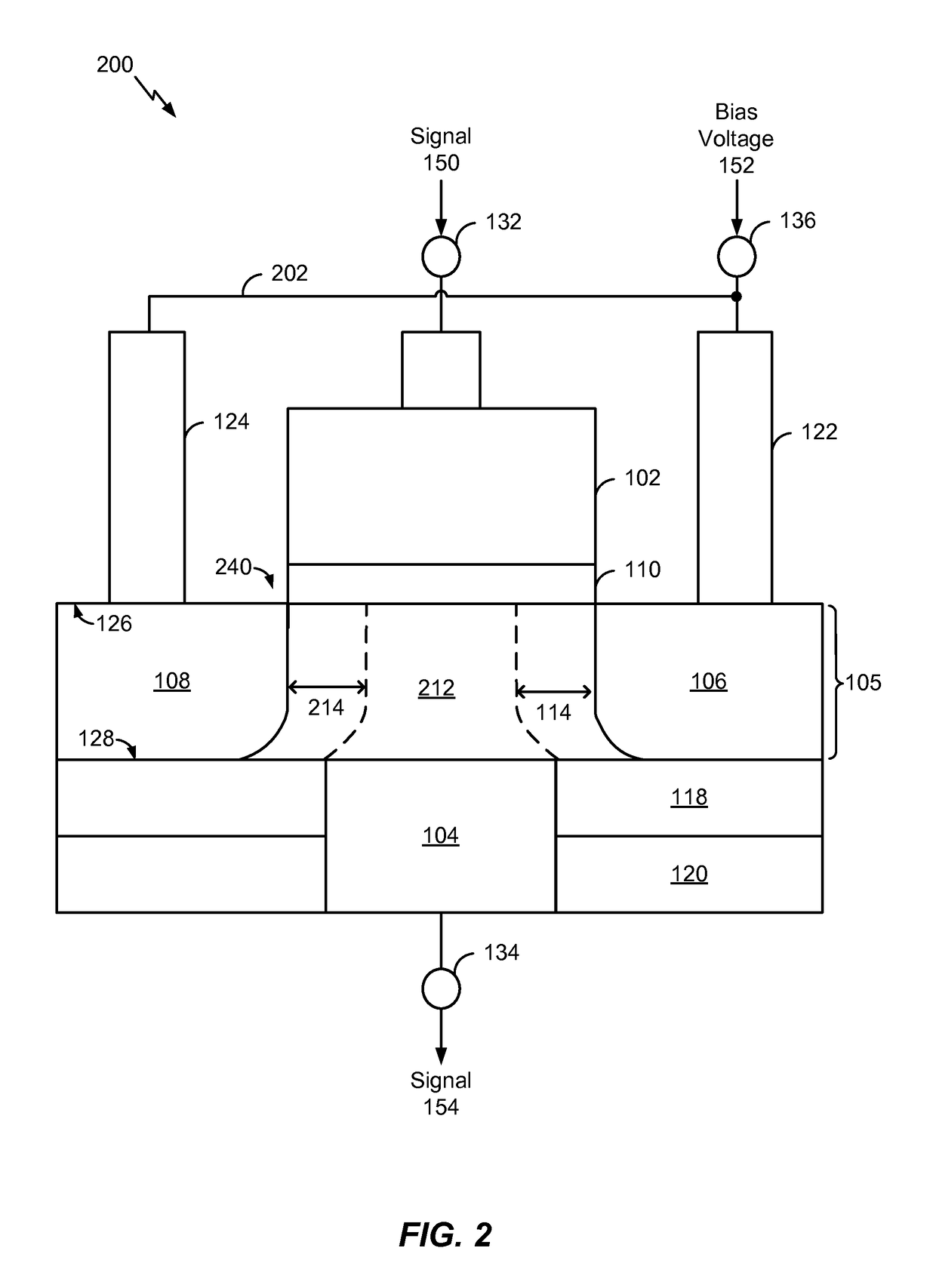Varactor device with backside contact
a capacitor and backside contact technology, applied in semiconductor devices, diodes, electrical apparatuses, etc., can solve the problems of reducing the performance of the transceiver, reducing the contact resistance, reducing the device performance, etc., to improve the signal loss and operation of the device, reduce the impedance, and the effect of shortening the length
- Summary
- Abstract
- Description
- Claims
- Application Information
AI Technical Summary
Benefits of technology
Problems solved by technology
Method used
Image
Examples
Embodiment Construction
[0018]Particular examples are described below with reference to the drawings. Similar or common features are designated by common reference numbers throughout the description and the drawings.
[0019]Referring to FIG. 1, a particular illustrative embodiment of a variable capacitor (varactor) device is depicted and generally designated 100. The varactor device 100 may be integrated within an electronic device, such as within a transceiver, as an illustrative example. To further illustrate, the transceiver (e.g., a receiver front-end of the transceiver) may include one or more varactor devices corresponding to the varactor device 100. The transceiver may utilize the one or more varactor devices to tune to receive and transmit one or more signals that are conveyed using a particular frequency or frequency band. In this example, the one or more varactors may have a frequency response that filters received signals, such as by suppressing or reducing certain low-frequency signal components....
PUM
 Login to View More
Login to View More Abstract
Description
Claims
Application Information
 Login to View More
Login to View More - R&D
- Intellectual Property
- Life Sciences
- Materials
- Tech Scout
- Unparalleled Data Quality
- Higher Quality Content
- 60% Fewer Hallucinations
Browse by: Latest US Patents, China's latest patents, Technical Efficacy Thesaurus, Application Domain, Technology Topic, Popular Technical Reports.
© 2025 PatSnap. All rights reserved.Legal|Privacy policy|Modern Slavery Act Transparency Statement|Sitemap|About US| Contact US: help@patsnap.com



